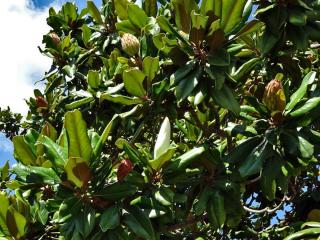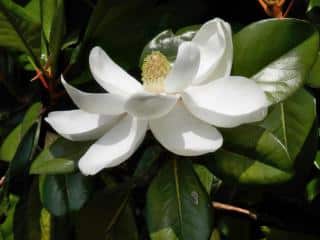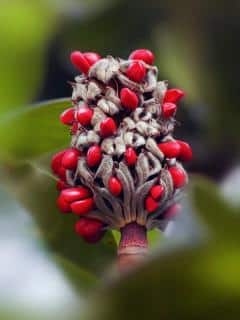

Summer Magnolia grandiflora, with its evergreen leaves, is the most common of magnolias.
Key Magnolia grandiflora facts
Name: Magnolia grandiflora
Family: Magnoliaceae
Height: 16 to 65 feet (5 to 20 meters)
Exposure: mostly sunny
Soil: rich and fresh, quite deep
Foliage: evergreen – Flowering: summer
When well planted, Magnolia grandiflora is easy to care for. Take care in planting to ensure good growth season after season.
It’s recommended to plant Magnolia grandiflora in fall to encourage rooting before winter and thus spring recovery.
 For Magnolia grandiflora bought in a container, you can easily plant it in spring.
For Magnolia grandiflora bought in a container, you can easily plant it in spring.
Evergreen magnolias can reach about 65 feet (or 20 meters) in height and should be planted at quite a distance from houses. When it’s isolated and it stands out from other trees is when it looks best.
After planting,
Magnolia grandiflora asks for little maintenance, resists diseases splendidly, though a few tips can trigger a better bloom:
 Mulch base with maritime pine bark to maintain acid levels it loves.
Mulch base with maritime pine bark to maintain acid levels it loves.Magnolia grandiflora demands little care when well established, gracing your garden for many years. Few pests target magnolia grandifloras, though sometimes you might spot a few aphids and more rarely red spider mites in summer.
Pruning isn’t essential but if you wish to reduce, balance or reshape branches, do it at winter’s end, around March-April.
Pruning to balance branches should be done in the last days of winter, before buds start forming. Remember, magnolia’s natural shape is its trademark, so aim to preserve it as you prune to retain symmetry among branches.
 Magnolia isn’t just a pretty tree, it’s got a rich history and even inspired a few artists! It’s named after Pierre Magnol, a French botanist who was quite renowned in his time. This tree is native to the United States.
Magnolia isn’t just a pretty tree, it’s got a rich history and even inspired a few artists! It’s named after Pierre Magnol, a French botanist who was quite renowned in his time. This tree is native to the United States.
People love it for its stunning summer bloom and its distinct fragrance. Magnolias come in tree and dwarf varieties, which are great for small gardens.
Now, there is one fact we must get straight: there are two major types of magnolias. One is evergreen, the other deciduous:
Maritime pine bark will provide acidity this tree needs to thrive and help it retain moisture. For added effectiveness, mulch in summer with a layer about 2 inches deep.